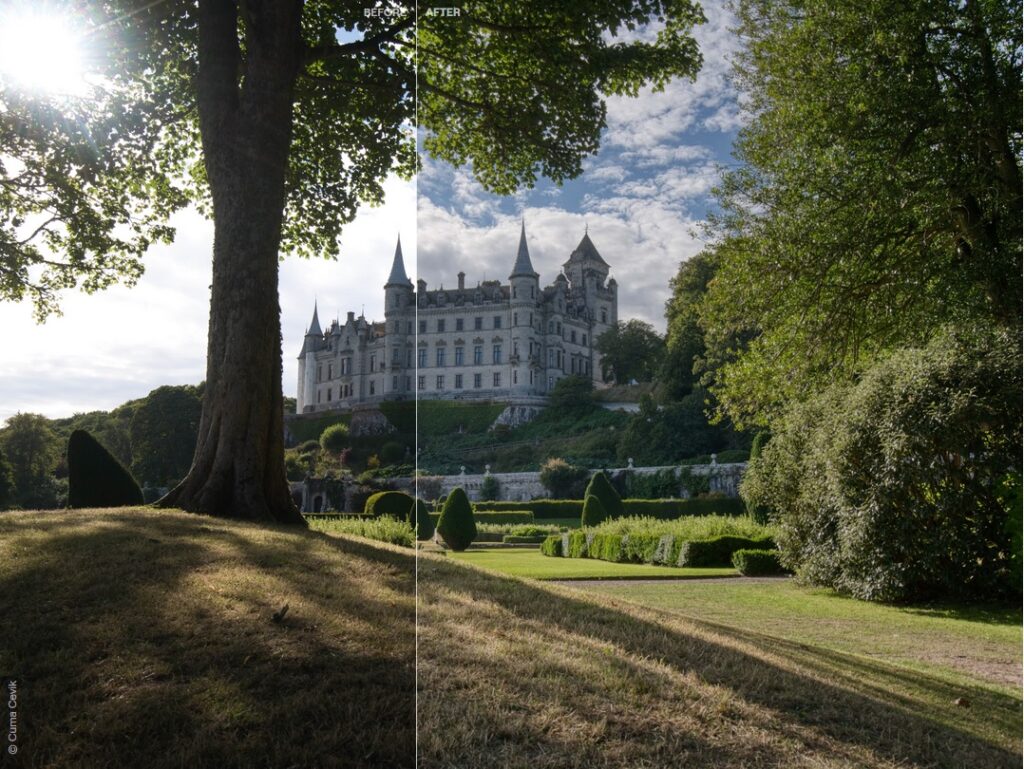In digital photography, the perennial debate between JPEG and RAW formats continues to echo through the lenses of photographers worldwide. While JPEG remains the default setting on most cameras, renowned for its convenience, the allure of shooting in RAW is a siren call that beckons with a promise of elevating one’s photographic prowess. In this article, we embark on an exploration of why the RAW format merits consideration and guide you through the transformative journey of converting your RAW files into captivating, final images.
What is RAW?
RAW is not an acronym but rather a label that encapsulates the unprocessed, uncompressed data meticulously captured by your camera’s sensor. When you opt to capture an image in RAW, you are preserving information, including color intricacies, luminance variations, and exposure nuances. This choice results in larger file sizes compared to the compressed world of JPEG, but it bestows upon you a palette of editing possibilities as vast as the creative horizons you dare to explore.
The Artistic Quest
Shooting in RAW transcends the realm of technical advantages; it becomes an art that invites photographers to traverse uncharted creative landscapes. This format empowering you to push the boundaries of your photographic skills while unveiling your distinctive style.
With the unrestricted freedom to meticulously fine-tune every facet of your imagery, such as the ability to rotate image online, you embark on a profound exploration of the photographic craft, forging a deeper connection with the artistry behind the lens. RAW photography transforms into a dynamic canvas upon which you convey stories with pinpoint precision, capturing emotions and moods in their purest form. Embrace the realm of RAW photography, and you’ll seize not just moments but also sculpt visual narratives that resonate with your audience on a profound level. RAW transcends mere format; it represents a path to artistic evolution, where your creativity knows no bounds.
Enhancing Post-Processing with Image Converter
Shooting in RAW bestows unmatched post-processing flexibility, especially when complemented by the prowess of a Raw Image Converter. These files house the complete spectrum of sensor data, granting you absolute control over exposure, white balance, and color grading during the editing process. This robust tool empowers you to effortlessly salvage underexposed or overexposed shots, achieve white balance perfection, and execute precise adjustments to color saturation and contrast.
In addition to its editing flexibility, RAW preserves the pinnacle of image quality. When you opt for the JPEG format, your camera’s internal processing discards a portion of the data to compress the file, often leading to a loss of detail and the emergence of unwanted artifacts. In stark contrast, RAW files are repositories of lossless data, faithfully retaining every nuance captured by your camera. This preservation of quality proves pivotal, particularly when you intend to produce high-quality prints or aspire to professional photographic outcomes.
Expanding the Dynamic Range
RAW files further extend their influence by preserving an expanded dynamic range, signifying the breadth between the darkest and brightest aspects of an image. JPEG, with its limited dynamic range, often sacrifices detail in shadows and highlights. In contrast, RAW offers the means to resurrect lost details in areas that might otherwise appear too dark or excessively bright. This capability shines in high-contrast scenarios such as landscapes featuring a brilliant sky juxtaposed with a shadowy foreground, where the objective is to maintain intricate details in both extremes.
The Art of Conversion
Now that we have unearthed the wealth of benefits associated with shooting in RAW let’s delve into the art of converting these data-rich files into consummate, shareable images. While modern cameras include software for processing these files, renowned post-processing tools like Adobe Lightroom and Luminar Neo are preferred choices among photographers for their formidable editing capabilities.
- Importing: Initiate your creative journey by importing your RAW files into your selected editing software. This step involves organizing your images and identifying those that warrant your artistic attention.
- Editing: Immerse yourself in the art of editing, adjusting exposure, fine-tuning white balance, refining contrast, and perfecting various parameters to attain your desired image aesthetics. The guiding principle here is to enhance your imagery while preserving its innate authenticity.
- Exporting: Upon satisfaction with your edited RAW file, export it as a high-quality JPEG or your preferred image format. This resultant file becomes your masterpiece, primed for effortless sharing online or even for producing exceptional prints.
- Backup: In your creative journey, ensure the safety of your RAW files and edited images through robust backup solutions. Equip yourself with reliable storage options, such as external hard drives or cloud repositories, to safeguard your photographic opuses from the threat of data loss.
Conclusion
Shooting in RAW format is a game-changer for photographers looking to take their work to the next level. It offers unparalleled editing flexibility, safeguards image quality, and expands the boundaries of dynamic range. While it might demand additional storage and post-processing efforts, the results are an exquisite testament to your dedication. The next time you wield your camera, consider the transformative power of RAW mode, allowing you to unlock the complete potential of your photographic vision. With precise editing techniques, your RAW captures memories that leave an indelible mark on your audience’s hearts and minds.
